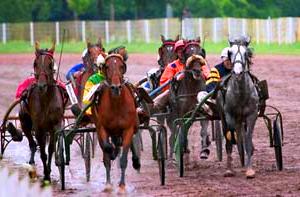Harness Racing
Harness racing is different from standard horse racing because so much of the end result depends upon the driver. Just like auto racing, it is going to be a matter of the efficiency of the vehicle (the horse) and the general skills of the driver. What happens when people learn the details about a driver, however, is that the payouts for bets on harness racing begin to decline sharply. This is standard math, and is due entirely to the fact that the handicapping points cause Harness Racing Betting to be very heavy. Additionally, when a driver and a horse are partnered up with a good trainer, the odds are even better. 
Of course, Harness Racing does require horses in optimal condition. The same statistics used by bettors in standard racing events should also be put to use by those considering bets on harness racing too. For example, what is the team’s consistency? Does the horse perform well for its class? Is it taking a single mile in a top speed? How does it rank against others?
In addition to considering the facts already mentioned, the individual placing bets on harness racing is going to have to consider exactly how they intend to bet on the races. For instance, will they be so sure of their research into a driver and a horse as to place a straight bet for “the win”? Maybe they aren’t as certain as that and will instead put a straight bet on the “show”? These terms apply to the wagering options selected by the bettor in order to use their information in the most favorable ways possible. Unlike the Horse Racing and the Horse Racing Betting markets, the Harness Racing is much smaller, niche ones, with specific fans worldwide
The types include win, place, and show. The win requires that the horse comes in first and tends to payout on a “favorite” or preferred horse around 30% of the time. The wagers made for placing require the horse to win or to come in second, and will payout on a favorite or preferred horse around 45% of the time. Lastly, the showing bets require a first, second, or third place finish and will payout an impressive 65% of the time when a horse is listed as a favorite.
There is also an option for a bettor to choose “across the board” which is a bit more complicated but essentially is a bet for all three types of finishes. This means that they can collect all three payouts if the horse actually wins the race. If it comes in second the bettor gets the money for the place and show wagers, and if the horse places third the bettor receives the show money only.
These details apply to the most common type of bet – the straight bet. This is something as simple as saying that you’ll put twenty dollars on a particular harness team to win. What happens next is that your wager will have odds applied to it based on what the bookmaker or the betting agency believes is appropriate. The odds will always determine what the payout is on the win, and some odds cannot be known until just before the race begins.



